On Creativity in the Kitchen
Published Mar 05, 2011•Updated May 28, 2020
This post may contain affiliate links. Please read our disclosure policy.
I was listening to a recording of a talk that Christopher Kimball, the creator of America’s Test Kitchen, gave at the Seattle Public Library. This was one of those automatically generated recommendations that came up, no doubt because Itunes is on to me and my addiction to archived episodes of The Splendid Table. His discussion of experimenting with recipes struck me. He started listing off all of the ways in which readers tweak recipes from that magazine and then write in about their adjustments. To be honest, although he was incredibly good-natured and had a great sense of humor about it all, I caught a slight hint of frustration in Kimball’s tone when talked about the changes people made to his recipes. And, who can blame him? He and his team spend nearly a month on every recipe so that it is a foolproof and fantastic guide to something we can reproduce in our own kitchen.
The problem is that although recipes exist to bring us dependably good dishes, I so thoroughly identified with the letters from readers about their tweaks. Actually, I imagine that many of us read over delicious-sounding recipes and wonder how we might alter them to better suit or preferences (or to make use of what we have in the fridge). Some of the substitutions were downright ridiculous (like cream of tomato soup instead of tomato paste), but for the most part they were things like using goat cheese instead of feta, or shrimp instead of chicken, light yogurt instead of full fat, and the list goes on. All of these things, I might add, are substitutions I have made in my own cooking.
It strikes me that there is certainly a place for a good recipe that we can follow step-by-step and know will make something dependably delicious. For most of my life, this has been critical in allowing me to hang out in the kitchen when I didn’t have time to be inventive with my cooking. There is so much value in having recipes that are simple and clear and ideally used the 5 ingredients that happen to be sitting in the refrigerator at dinner time.
But there is another side of this cooking thing, that I am fortunate enough to be discovering at this very unique time in my life. The creative side. When we tweak recipes, we get to make them our own. In fact, I would argue that some of the best recipes I have ever come across are those that I make again and again because I can abuse them and change them in countless ways and always come out with something great and new. Recently I have come across two great books that can help a home cook to do just that.
The first book is Ratio by Michael Ruhlman. Despite the fact that it is sort of a book for cooking nerds who want to know how and why things work they way they do, it’s easy to read, and totally engaging. Even the chart on the front cover fascinates me because it reveals the basic formulas needed to make a variety of very common things – bread dough, cookies, cakes, biscuits. Inside he also explores the balance of ingredients that create stocks, sauces, vinaigrettes. To my surprise (and delight) this book has given me confidence to stray from a recipe and to use what I have and what I like to make totally new things. It’s so smart…and so simple when broken down by Ruhlman.
The second book I’ve loved is Artisan Bread in Five Minutes a Day by Jeff Hertzberg and Zoe Francois. This is not so much a book of recipes as it is an explanation of a philosophy that includes recipes. Although I doubted it at first, the bread in this book really does only take 5 minutes a day to make…and it is incredible. The book explains the science behind it all, but short story is that you mix the right amount of flour, water and yeast together, let it rise on the counter and then store it in the fridge for 14 days. Most of the breads age in the fridge, so you can bake them right away, but they become practically divine near the end of 2 weeks at which point you pull out as much dough as you want and slap it on a pizza stone. I was always intimidated by bread making. This is so easy that it honestly even puts my old bread machine to shame. All of the pictures in this post are breads I’ve made using this book! Including the dough for the potato pizza (below) that we had for dinner last night.
By the way – can you guess what Kimball says is the most popular recipe that America’s Test Kitchen has ever produced? Green Bean Casserole! How fantastic is that? For all the current fascination with molecular gastronomy and modern infusion and things prepared with liquid nitrogen, it just goes to show that nothing can replace classic comfort food.
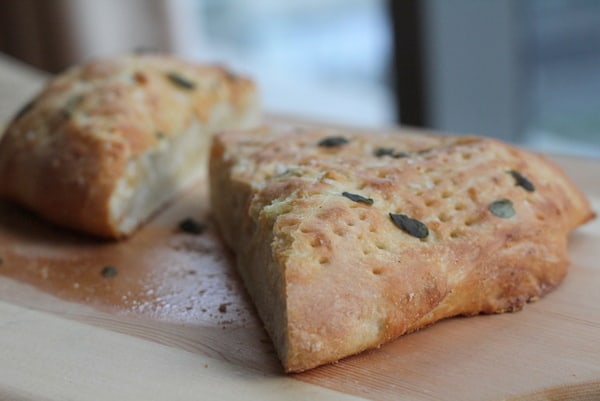
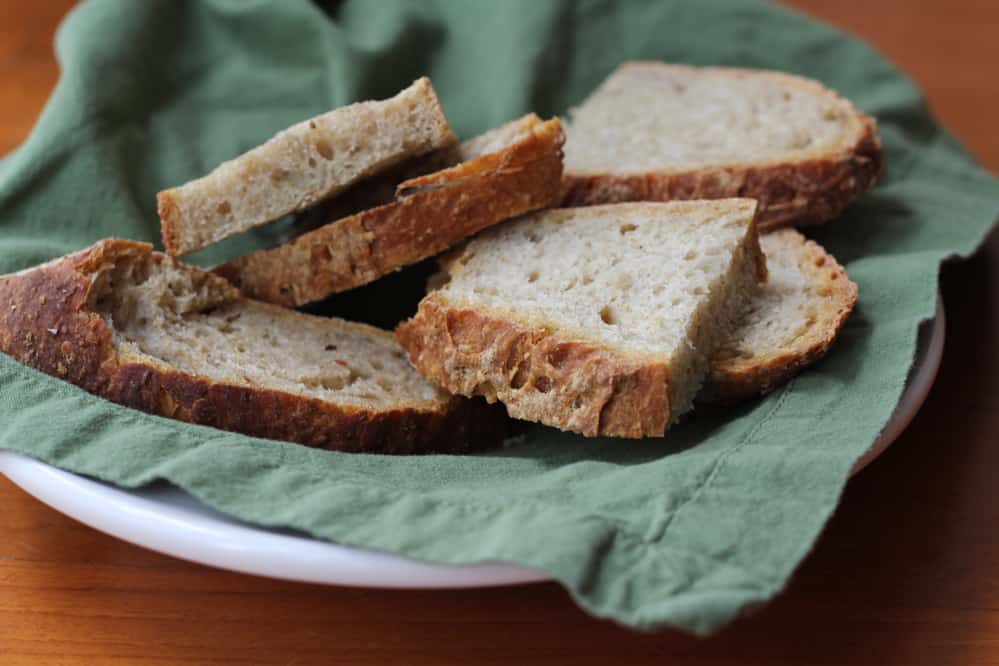
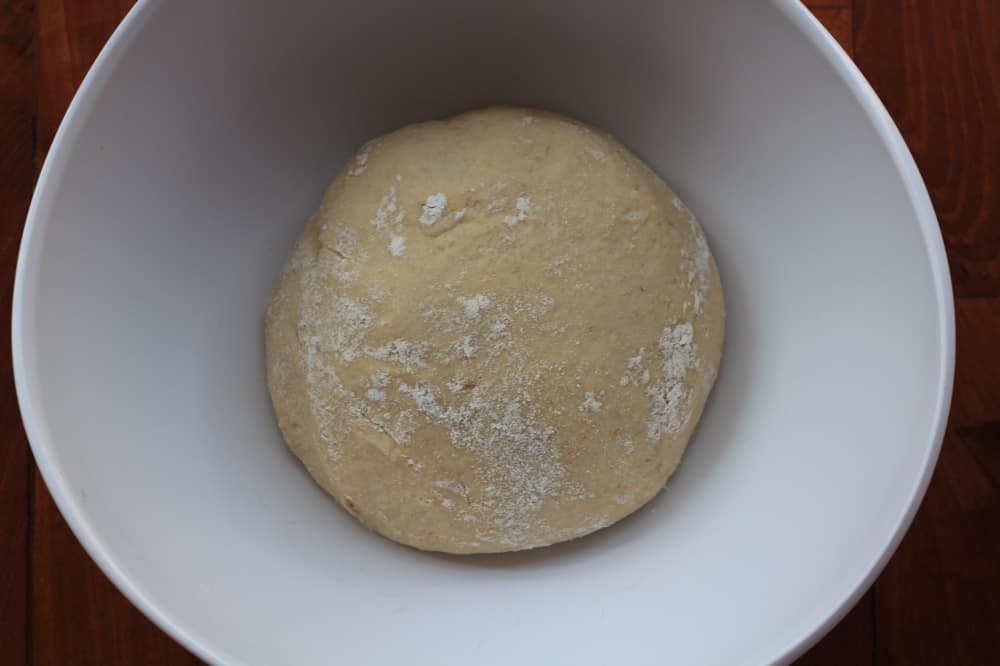
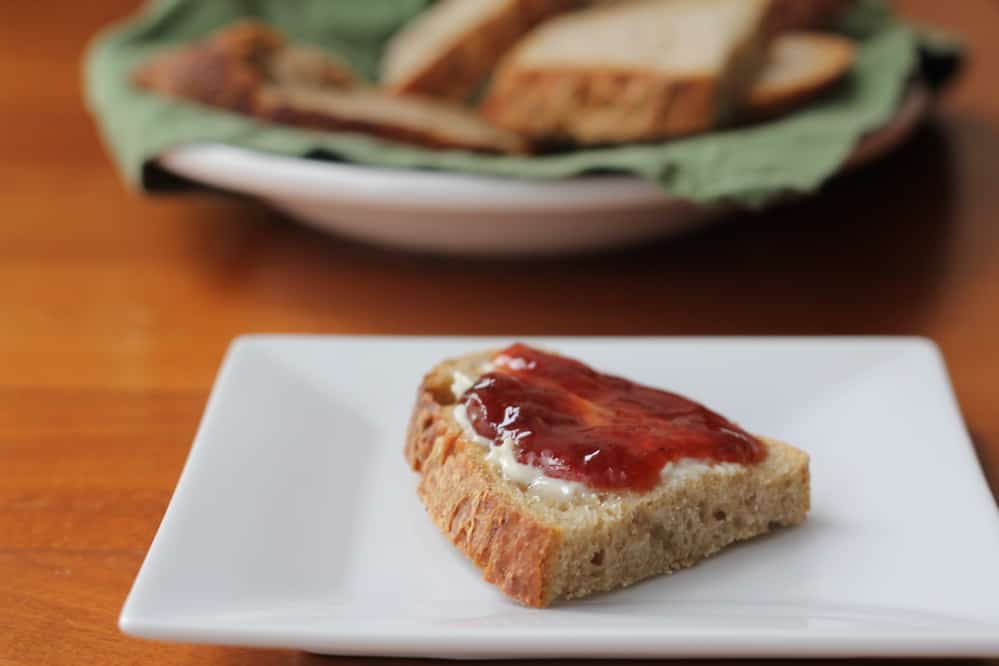

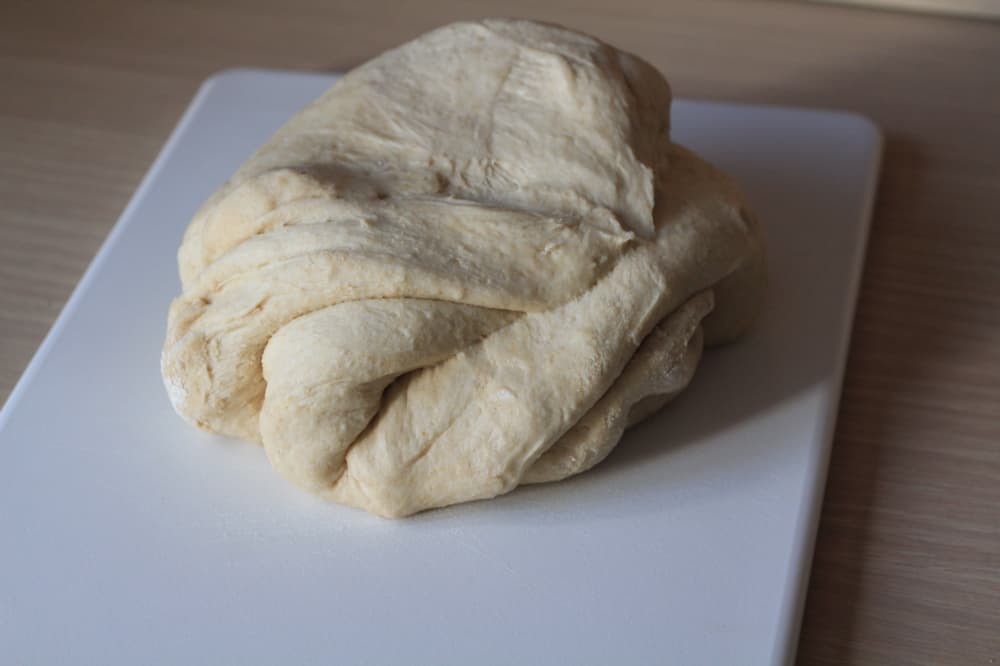
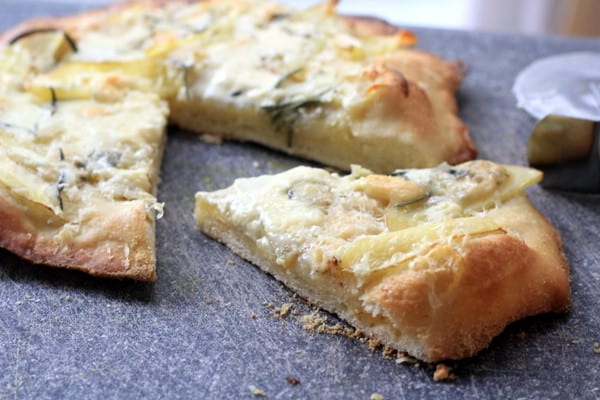

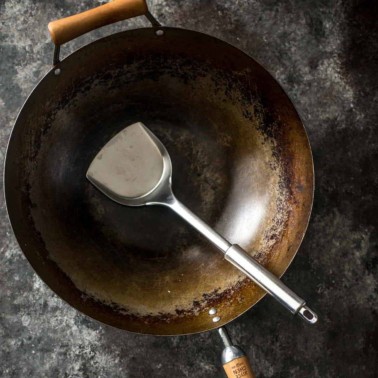
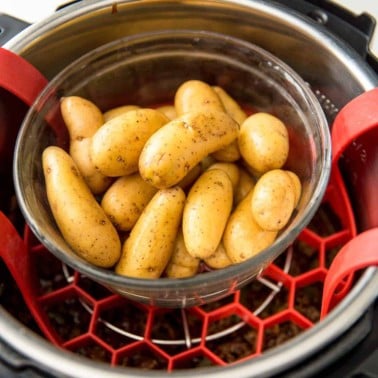









One of the very nicest things about life is the way we must regularly stop whatever it is we are doing and devote our attention to eating. ~Luciano Pavarotti